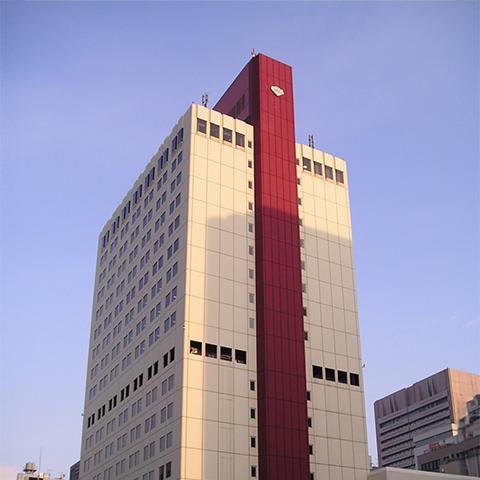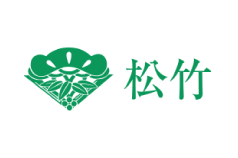Shochiku Co.
Introduced a workflow system for the entire group as part of DX promotion
Digitized 12,000 applications per year and contributed to reviewing business processes
The Corona Disaster led to the introduction of a workflow system
Since its establishment in 1895, Shochiku has been committed to the inheritance and development of Kabuki, Japan’s world-class traditional performing art, while continuing to provide wholesome entertainment centered on theater and film. With 17 major group companies, 4 directly managed theaters, and 26 movie theaters, the company is committed to “inheriting and developing the traditions of Japanese culture and contributing to world culture. To meet the needs of the times and deliver rich and diverse content to people of all ages. The company’s mission is “to contribute to global culture by continuing and developing Japanese cultural traditions,” and it is developing a wide range of comprehensive entertainment businesses for the Japanese and global markets.
In response to the growing momentum for DX promotion in recent years, Shochiku has been reviewing its existing operations to create a better working environment for its employees. 2017 saw the formation of a cross-departmental project team that began exploring operational reforms utilizing digital technology. However, there was not a little resistance from within the company to changing the traditional way of doing things, and the reforms were not proceeding as expected. This was because Shochiku’s business is based on welcoming audiences to theaters and cinemas, and the company’s business is fundamentally face-to-face.
However, when the global pandemic of the new coronavirus infection begins around 2020, the company will be forced to rethink its face-to-face style of work.
We, too, have hurriedly made preparations to accommodate telecommuting. The biggest challenge of all was to make it possible for teleworkers to handle applications and approvals that used to require signatures and seals on paper documents.
The System Office of the Corporate Planning Department, which had been conducting research in parallel with the project team, therefore decided to implement a full-fledged study to introduce a workflow system that would enable electronic and paperless application and approval processes. The System Office of the Corporate Planning Department, which had been conducting research in parallel with the project team, decided to begin full-fledged studies for the introduction of a workflow system that would enable electronic and paperless application and approval processes.
The System Office had been distributing laptop computers to employees for telework and enabling them to receive extension calls via smartphones in order to cope with the Corona disaster, but in fact, we had wanted to solve the problem of application and approval work, which sometimes takes several weeks to be approved. In fact, we had long wanted to solve the problem of applications and approvals, which can take several weeks to be approved. The project team was also discussing the same issue with us, so we decided to work together to find a workflow system that would be a good candidate for implementation.
Background of Introduction
Selected Styleflow based on price, ease of use, and implementation experience
T’sIn selecting a workflow system, the company looked at Internet comparison sites and picked the first six products. From there, they narrowed down the list of candidates.
The first step was to compare the products from three perspectives: functionality, price, and track record of implementation.
First, Shochiku compared each product from three perspectives: functionality, price, and track record of implementation. The company narrowed down its search to three products that seemed to meet its requirements. After carefully examining the operability of the three products on a trial basis, the company finally selected TDC SOFT’s Styleflow.
There were four deciding factors for adopting Styleflow: First, it was a cloud-based workflow system that did not require an in-house server; second, the cost was affordable and well understood within the company; third, it had a proven track record of being used by major companies, which gave us a sense of security; and fourth, through the trial implementation, we were able to gain a sense of security. And fourth, the ease of use of the system was confirmed through the trial. The ease of use was especially important because even employees unfamiliar with IT should be able to use the system, and we wanted each business unit to create their own application and approval flow, so the ability to import and design existing documents was a major factor.
When Shochiku officially decided to implement Styleflow, it was in October 2020. Shochiku officially decided to implement Styleflow in October 2020. The company then invited departments that wanted to improve their business efficiency through the introduction of the system, and began small-start operations in January 2021. The system was first introduced to administrative departments such as the General Affairs Department, the Accounting Department, and the Corporate Planning Department. The company has been working on digitizing and paperless application and approval processes that are mainly used by all employees, such as requests for approval documents, applications for the issuance of entrance passes, and applications for the purchase of company smartphones.
We also carefully helped employees who were unfamiliar with computers to learn how to use them by accompanying them in person,” said Mr. Kato. TDC SOFT’s support has been very helpful from the time the system was first introduced to the time it has been in operation, and the accuracy and speed with which they respond to our inquiries have been impeccable.
Effects of Introduction
Application and approval work takes one-third of the time and is used to review business processes
Starting with the administrative division, Shochiku has introduced Styleflow throughout the company, and is continuing to expand the system to the 15 group companies. As a result, many of the previously paper-based applications and approvals that were being operated company-wide at Shochiku, as well as applications from group companies to Shochiku, have been transferred to the workflow system.
While some departments at Shochiku have telecommuters, the company has also begun to take extended business trips, as in the past, since the measures to prevent the spread of the new coronavirus infection have been fully lifted. The introduction of Styleflow has greatly reduced the amount of work required by the company by allowing employees to apply for and receive approval from telecommuting, on extended business trips, or at the filming site.
The employees who apply no longer have to come to the office to have their stamps stamped or have to search for the person in charge or their supervisor, which speeds up the approval and decision-making process.
Currently, the number of applications using Styleflow amounts to approximately 12,000 in FY2023 for the entire company.
There are many executives (supervisors) who frequently travel between locations depending on the department. Therefore, in the past, we had to ask our supervisors who traveled to and from the Kansai area, where our branch offices and directly managed theaters are located, to take the documents to the branch offices and theaters to have their stamps stamped every few days.
In addition, the progress of applications is now visualized, and the status of the work can be easily grasped, making it easier to schedule work. Furthermore, similar applications can be easily reused with only minor modifications by sharing and referencing previous applications and approval forms.
The sharing and referencing of documents in storage is also useful for handing over business operations. We no longer have to keep paper documents, and we have reduced the number of cabinets we need to store them in.
When undergoing external audits, documents no longer need to be submitted on paper, but can simply be output as CSV or PDF data from the Styleflow screen. This has greatly reduced the workload of the staff in charge.
The introduction of Styleflow was also an opportunity for us to review our business operations. As we move forward with the digitization and paperless application and approval process, it was a good opportunity for us to consider whether what we had taken for granted as part of our workflow was really necessary, and whether it could be simplified. In this sense, it has also led to an inventory of our business processes.
Future Outlook

Import each application into Styleflow as much as possible and promote integration with other systems
Shochiku intends to continue to accelerate business reform and DX promotion through the use of digital technology. Currently, there are many applications and approvals that are completed only within each company or department, and some of them are submitted by fax, and the majority of them are not integrated into the workflow system.
Each site has its own application and approval rules based on its own circumstances, so we would like to promote the digitization and paperless use of workflow systems by providing advice on how to design and use Styleflow while taking those rules into consideration. In addition, we would like to realize single sign-on based on Active Directory to enhance usability as well. We look forward to continued support from TDC SOFT.”
Company Information

Shochiku Co.
An increasing number of companies are moving toward digitization and paperless operations as part of their efforts to achieve digital transformation (DX) and to reform the way they work. Shochiku, one of Japan's leading general entertainment companies, has introduced a new workflow system to actively promote digitization and paperless work, triggered by the implementation of telecommuting and teleworking through the Corona disaster. The entire group is promoting the digitization and paperless processing of applications, approvals, and decision-making processes, including the approval process. What issues have been resolved and what benefits have been gained from the introduction of this system? We interviewed members of Shochiku's Corporate Planning Department.
- Establishment
- 1920 (Taisho 9)
- Location
- Togo Gekijo Building, 4-1-1 Tsukiji, Chuo-ku, Tokyo, Japan
- Home page
- https://shochiku.co.jp
- Industry
- Entertainment
- Employee size
- More than 500 but less than 1,000
